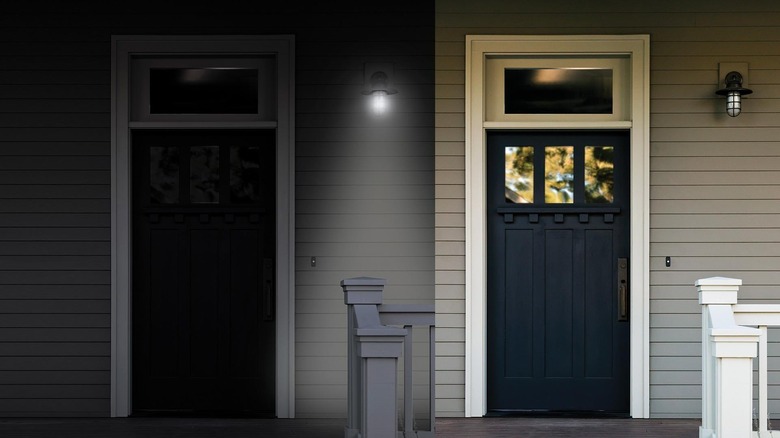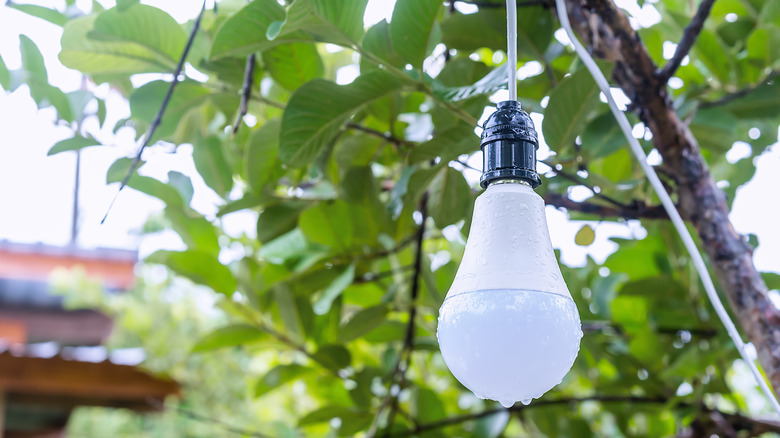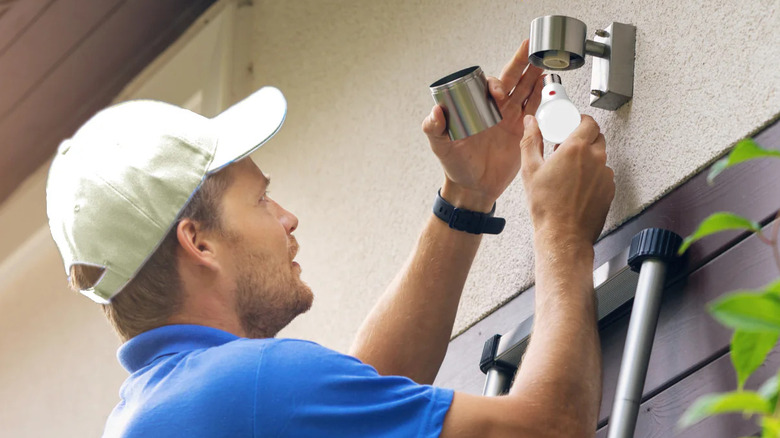Dusk-To-Dawn Light Bulb: What Is It & How Does It Work?
Home lighting solutions have evolved to the point where you no longer need to roll off the couch to flip a switch. These days, you just have to press a button on your phone to light up the room. If you want to be even more hands-off, you can set the smart light bulb to turn on and off automatically at your preferred times. But while these smart home gadgets can upgrade your home's lighting, they can also be a pain. Some people find them too overwhelming to configure; they also require Wi-Fi, and can pose some privacy and security concerns, too.
Thankfully, smart lights aren't the only form of convenient, automated lighting available. You also have dusk-to-dawn light bulbs. A dusk-to-dawn light bulb is just like its name suggests — a light bulb that only works from dusk to dawn. It switches on and off automatically without requiring home networks and apps, thanks to a dedicated sensor. Here's the simple tech behind this type of bulb.
How dusk-to-dawn light bulbs work
Dusk-to-dawn light bulbs are different from energy-hungry smart bulbs, which need to be scheduled via an app, smart home hub, or voice assistant. Instead, they rely on a photocell sensor. This sensor reacts to the intensity of the surrounding light. When it becomes dark and the natural light falls below a certain threshold, usually at dusk, the sensor activates the bulb. Once daylight returns, the sensor detects this increase in light intensity and turns the bulb off.
The built-in photocell sensor in every dusk-to-dawn light bulb works automatically and doesn't require any special setup. All you need to do is make sure the bulb receives power. So yes, the light switch needs to be on for a dusk-to-dawn light bulb to work. As long as the fixture is switched on, the sensor will take care of the rest. Installing a dusk-to-dawn light bulb is pretty similar to a regular one: simply screw it into a fixture and leave the switch on. Dusk-to-dawn light bulbs will work in any fixture with the right socket type. If your bulb is A19, it should fit into a standard household light socket. If you have a candelabra bulb, you need a smaller E12 socket.
While installation is easy, it's important to be mindful of the photocell sensor's position. Make sure it's pointing in a direction where it can catch ambient light. That said, dusk-to-dawn light bulbs work best outdoors. This makes them the ideal lighting solution for front porches, street lights, walkways, and backyards.
What to do when your dusk-to-dawn light bulb isn't working
Dusk-to-dawn light bulbs may be simple, but they're not trouble-free. If you install a dusk-to-dawn bulb and it isn't working as expected, you can try to troubleshoot it before recycling it or returning it to the store.
First, check whether the photocell sensor is covered. It's a round object near the base and is usually marked with the brand logo. If the sensor is blocked by thick debris, stickers, or lampshades, it will think it's always dark out and keep your dusk-to-dawn light bulb turned on all day long. Clean the bulb with a lint-free cloth — one of the best tools to keep electronics clean — and make sure the sensor is clear of any obstructions. Speaking of obstructions, ensure that the sensor's also receiving enough direct natural light. The bulb might be in a shaded location during the day, preventing sunlight from reaching it. Try installing it elsewhere, away from walls or trees, and with the sensor pointed toward the sun.
Other bright light bulbs or light-emitting surfaces like windows and mirrors could affect the sensor's functionality. Move the dusk-to-dawn bulb about two feet away from other light sources and place it higher than windows or mirrors. If you tried everything and your dusk-to-dawn light bulb still doesn't turn on and off automatically, it might be due to a defective photocell sensor. You can test it by covering the sensor to mimic dusk. The bulb should light up, then go off again when you stop covering it. If it fails the test, it's time to buy yourself a new bulb.


